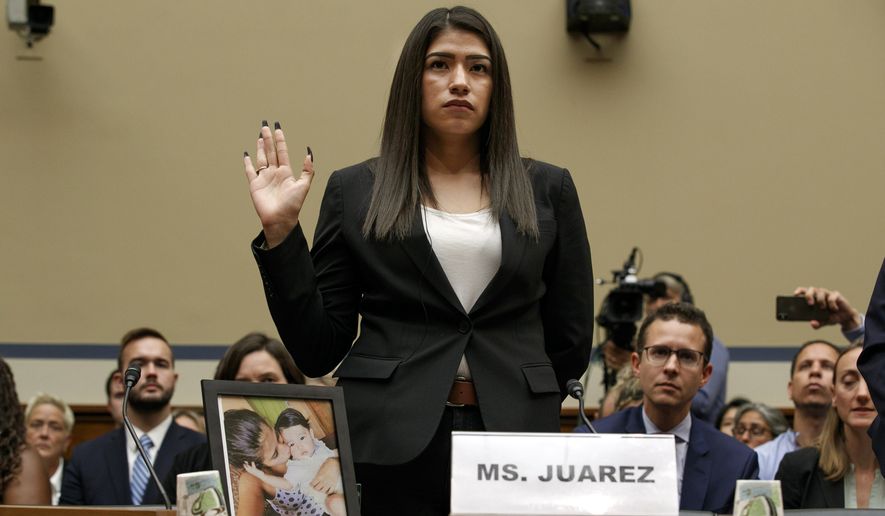
Mom testifies about losing daughter in ICE facility
Yazmin Juarez made a treacherous trip for thousands of miles safely, but when she got to America, her daughter got sick and never recovered.
The mother of an almost two-year-old daughter who died in an Immigration and Customs Enforcement (ICE) facility told her story to Congress.
The House Oversight Committee held a hearing entitled “Kids in Cages: Inhumane Treatment at the Border.”
The first witness was Yazmin Juarez, an asylum seeker who crossed the Mexican border with her daughter who was nearly two years old.
Speaking through an interpreter, she stated in her opening remarks, “My name is Yazmin Juarez. My daughter Mariee and I fled Guatemala last year, seeking asylum in the United States. We made this journey because we feared for our lives in Guatemala. The trip was dangerous, but I was more afraid of what might happen to us if we stayed. So, we came to America, where I hoped to build a better, safer life for us. That did not happen. Instead, I watched my baby girl die – slowly and painfully – a few months before her second birthday.”
Six children have died in ICE facilities since September 2018.
Juarez continued in her opening remarks describing the circumstances which led to her daughter’s death.
“My Mariee had always been a happy, healthy baby. She made the journey from Guatemala without any problems. When we crossed the border and made our claim for asylum, she was the normal, giggly baby she’d always been. We were immediately held in CBP custody for three or four days in a facility known as “la hielera” because it is freezing cold at all times. We were locked in a cage with about 20 other people, including children, and forced to sleep on a concrete floor.
Juarez described how over the next week her daughter was seen by more physician’s assistants before a doctor finally saw her and prescribed a combination of Pedialyte, Ibuprofen, Zyrtec and Vicks VapoRub.
“I didn’t learn until after she died that you aren’t supposed to give Vicks VapoRub to kids under 2-years-old because it could cause respiratory problems,” she stated.
Juarez said she was finally flown to New Jersey where her daughter received proper medical care, but it was too late.
RELATED CONTENT
“Over the next 6 weeks, she was transferred to another hospital that specialized in treating children with serious medical conditions. I watched as my little girl suffered horrible pain. She was poked and prodded with all kinds of needles, underwent countless tests, and eventually needed a ventilator to help her breath. She was attached to so many wires that I couldn’t even hold her to comfort her when she cried.
Another panelist was Dr. Carlos A. Gutierrez, a pediatrician who has been providing care for those in ICE facilities since 2014.
He described the conditions in his opening written statement.
“Then came a frantic phone call to 25 to 30 of us community doctors on a Sunday evening in October of last year - it was from a refugee shelter located in Central El Paso. 250 men, women, and children had been from a Border Patrol Detention Center and left at a local Greyhound Bus Station. At least 50% of them were suffering from diarrhea, vomiting, and dehydration. We were able to coordinate and work diligently as a team. By the end of the night, we admitted 5 infants who had high fever and dehydration, and one severe diabetic.”
Dr. Gutierrez, who said he provides his services in the detention centers pro bono, stated that he and other community doctors, “are allowed absolutely no communication to those that are providing initial care at the ICE/Border Patrol Facilities. This is a detriment to the services that we are trying to provide as it disrupts continuity of care.”
He said the reason that communication is not allowed between community doctors and the doctors at the facility is to protect the privacy of the patients, but he said this was no excuse.
“That response is inadequate and quite frankly ridiculous. Proper medical care involves open lines of communication.”










LEAVE A COMMENT: